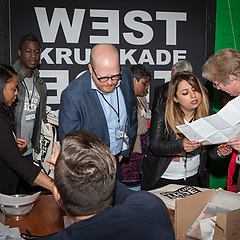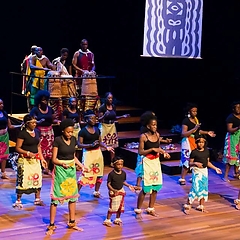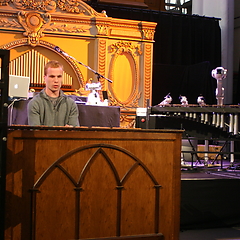Kaha di òrgel is a musical instrument that is somewhere between a cylinder piano and an organ. It consists of a wooden (sound) box with a turning cylinder in it, on which pieces of music have been put, and a crank to make the cylinder move. Besides this, Kaha di òrgel is also an ensemble, which comprises, next to the instrument, a wiri player and a dance couple. The wiri is a metal tube with ridges, which makes a rhythmic sound when one rasps the ridges with a stick. The Kaha di òrgel mainly plays dance music like the waltz and the mazurka, but also tumba and polka. There are usually maximum eight pieces of music on a cylinder. The dance couple wears European-style, mostly long clothing, although this is currently changing. Sometimes shorter skirts and colourful patterns can be seen. The Kaha di òrgel is commonly played at semi-formal occasions, like communions and receptions, but it can also be heard at family parties or sometimes on a square.



